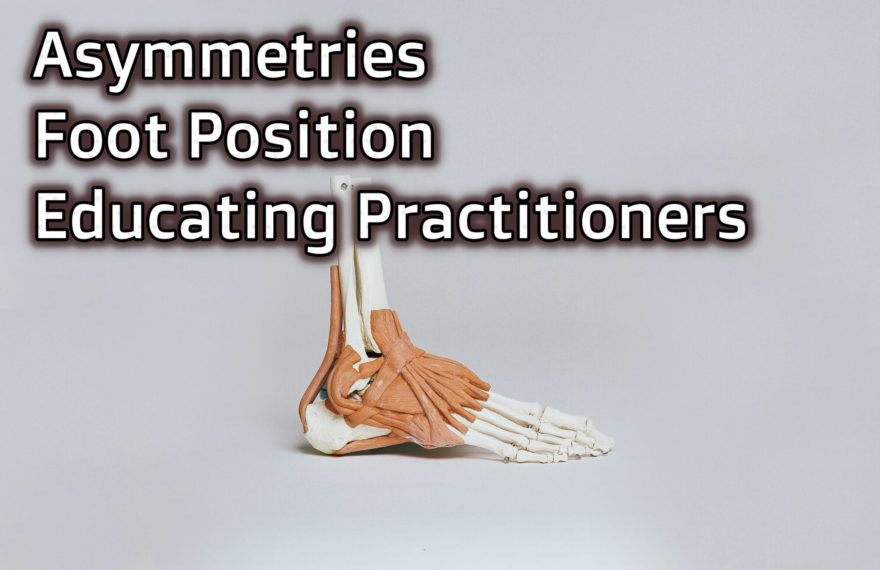Movement Debrief Episode 105 is in the books. Below is a copy of the video for your viewing pleasure, and audio if you can’t stand looking at me.
Here is the set list:
Is it more important to correct axial skeleton imbalances or side to side asymmetries?
Should we do bilateral lifts to challenge the weak side to “keep up”, or should we perform single sided activities to even things out?
- How important is foot positioning during resets?
- What are some strategies to drive calcaneal inversion or eversion?
- How do you communicate more specific treatment goals with other practitioners who aren’t familiar with your model?
If you want to watch these live, add me on Instagram. They air every Wednesday at 7:30pm CST. Enjoy!
and the audio version:

 t
tTable of Contents
Below are the links mentioned in the show notes
Check out Human Matrix promo video below:
Below are some testimonials for the class:
Want to sign up? Click on the following locations below:
January 25th-26th, Scotts Valley, CA (early bird ends December 24th)
April 4th-5th, 2020, Atlanta, GA (early bird ends March 6th at 11:55pm)
The Uprising with myself, Pat Davidson, and Seth Oberst, February 8th-9th (early bird ends January 3rd)
May 23rd-24th, 2020, Dickinson College in Carlisle PA (Early bird ends April 26th at 11:55pm!) [Approved for 14 Category A CEUs for athletic trainers]
June 6th-7th, 2020, Minneapolis, MN (Early bird ends May 3rd at 11:55pm!)
August 1st-2nd, Boston, MA (Early bird ends July 5th at 11:55pm!)
September 12th-13th, Montreal, Canada (Early bird ends August 16th at 11:55pm!)
October 3rd-4th, Ann Arbor, MI (Early bird ends September 6th at 11:55pm!)
Or check out this little teaser for Human Matrix home study. Best part is if you attend the live course you’ll get this bad boy for free!
Here’s a signup for my newsletter to get nearly 3 hours and 50 pages of content, a free acute:chronic workload calculator, basketball conditioning program, podcasts, and weekend learning goodies:
[yikes-mailchimp form=”1″ submit=”Get learning goodies and more”]
Asymmetries (1:23)
Yo Zac!!
Whats more important: correcting a front-back imbalance (axial skeleton) or side-to-side imbalance…
and should we do bilateral lifts to challenge the weak side to “keep up”, or should we be doing way more unilateral all day long?
I’m asking bang-for-buck- obviously the easy answer is “both”… But what does research suggest is the most effective way to improve symmetrical strength and function?
Thank you a million!
Foot Position (16:40)
How important is foot position during resets? Out of interest. If we are heavily inverted and Er at the hips
Educating Practitioners (26:28)
Hey Lord Zed
How do you communicate more specific treatment goals with other practitioners who aren’t familiar with your model and look at you like you just farted in their cereal if you mention, for example, increasing movement of the rib cage to help a shoulder move better. There’s a couple of guys near me who are in to cracking bones and needles (therapists, not gangsters) and its tricky to find common ground. Hope that makes sense.
Thanks Zac, really appreciate you.
Sum Up
- Most people are limited bilaterally, even though asymmetries are present
- Bilateral exercises often encompass those movements which are unilateral; these are not mutually exclusive
- Bilateral exercises teach fundamental components needed to maximize movement options
- Both bilateral and unilateral exercises ought to be included in a comprehensive movement program
- Poor foot positioning could negatively impact available hip motion
- Keeping the legs “centered” during resets may allow for maximizing movement options coordinated with respiration
- Communicating with those who think differently than you requires understanding the other person, translating your techniques into their framework, then education once the other is ready
Photo by Nino Liverani on Unsplash

